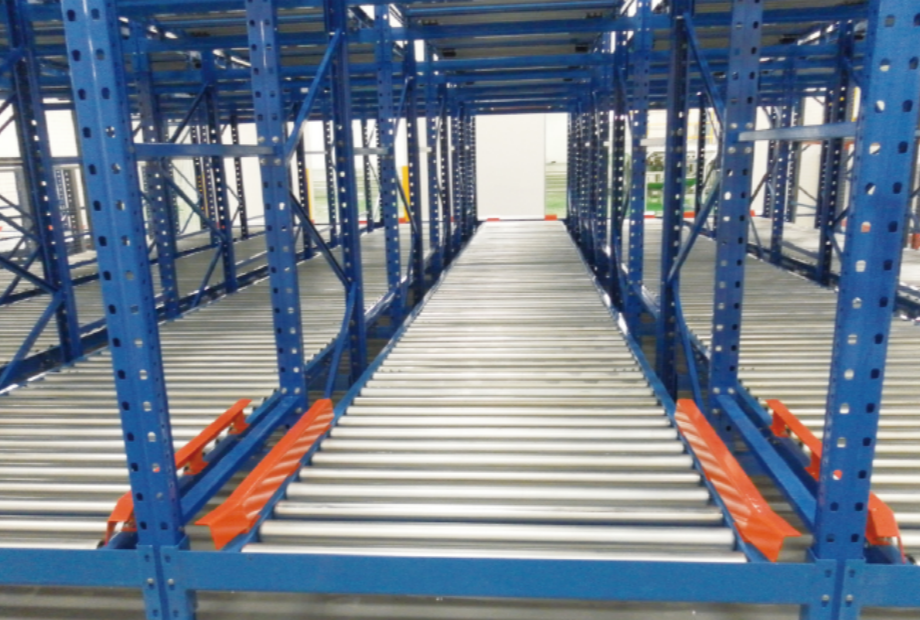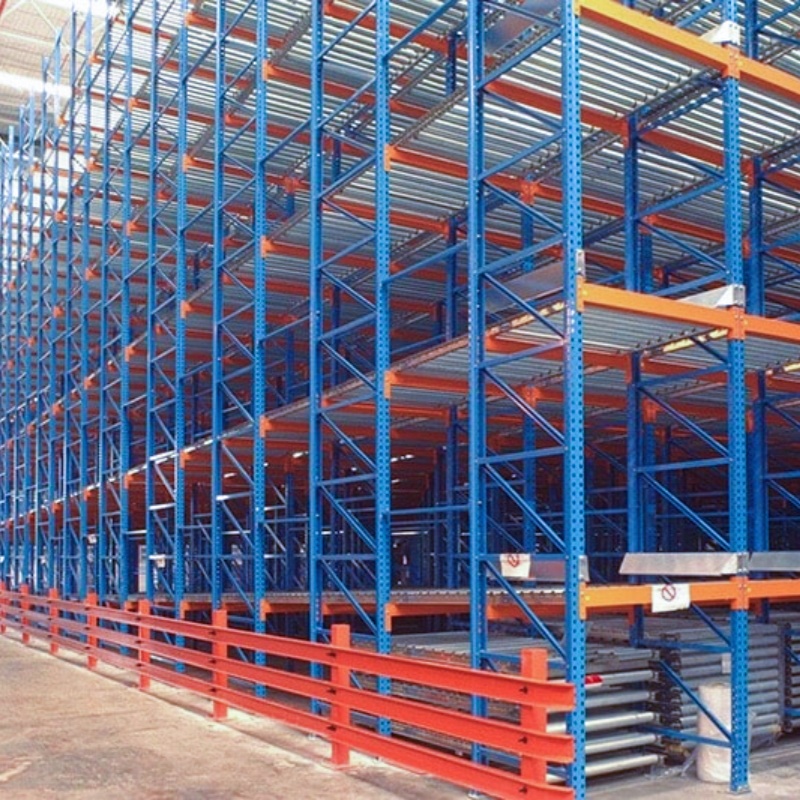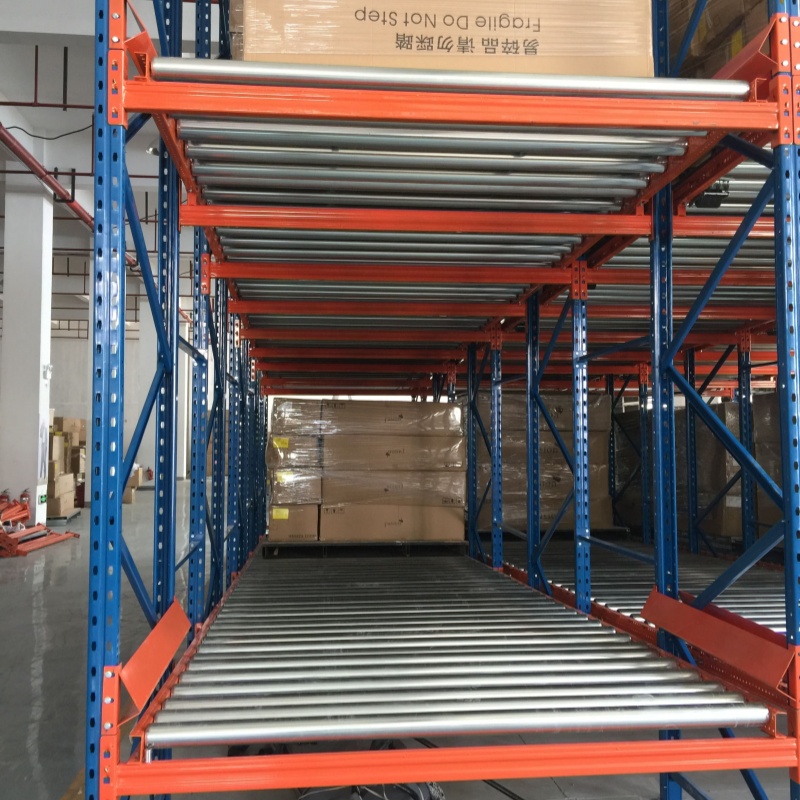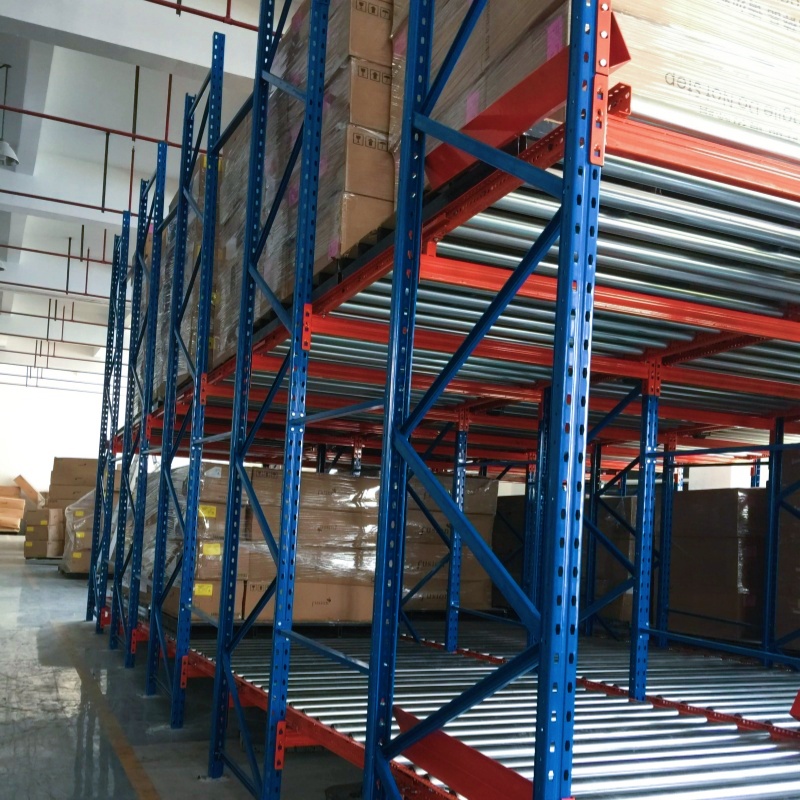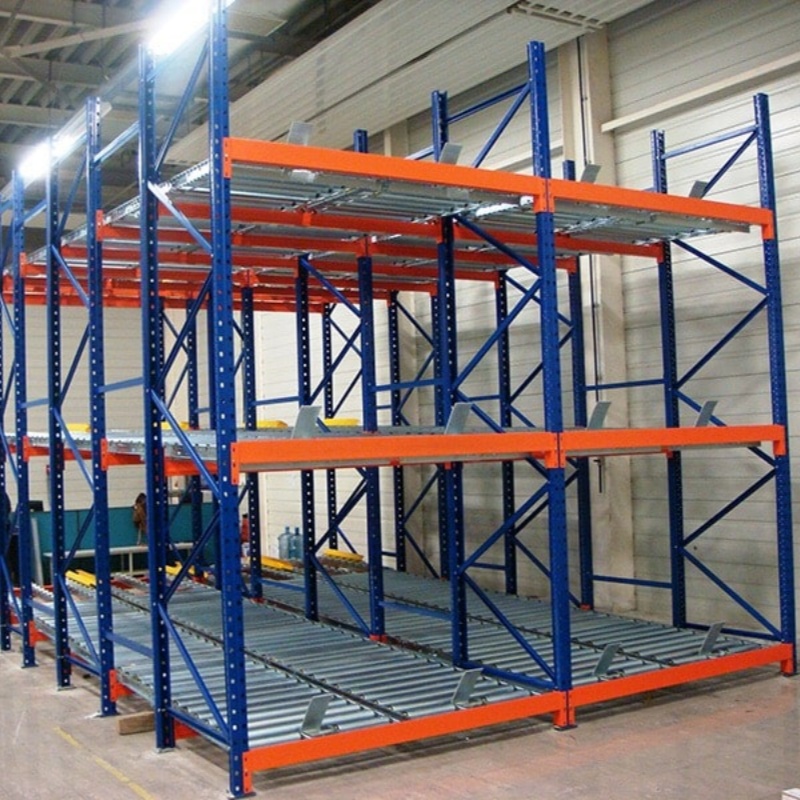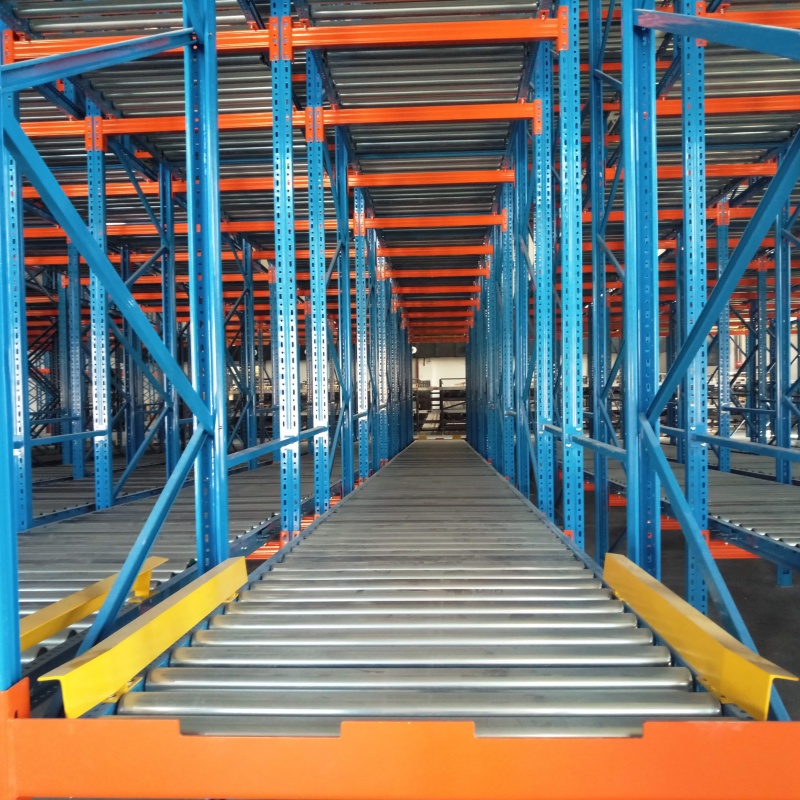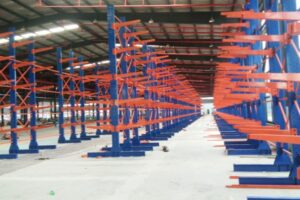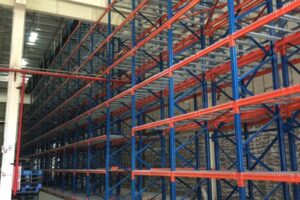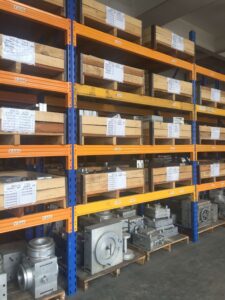I.The Wise Choice of Gravity Rack Warehousing
Gravity racks, also known as roller racks, cleverly utilize the self-weight of the goods. Through the design of inclined sliding channels, they enable the automatic flow, storage and retrieval of goods. There is no need for electric power drive or complex operations. Under the action of gravity, the goods, just like the products on an assembly line, automatically slide to the designated positions, which greatly improves the warehousing efficiency.
II. The Design Secrets of Gravity Racks
The sliding channels of gravity racks are designed to be inclined, which is the key to achieving the automatic sliding of goods. The inclination angle is usually between 3° and 5°. This can not only ensure that the goods slide smoothly but also prevent the goods from being damaged or posing potential safety hazards due to excessive sliding speed.
The roller-type tracks are an important component of gravity racks. They are installed on the crossbeams of the racks and provide sliding support for the goods. The design of the roller-type tracks enables the goods to remain stable during the sliding process and reduces the sliding resistance at the same time.
On the sliding channels, guide wheels are usually installed to guide the goods to slide along the correct path. At the same time, in order to prevent multiple pallets from sliding out simultaneously during the goods picking process, which may cause interference in goods picking, separators are equipped between adjacent pallets.
In order to control the sliding speed of the goods, gravity racks are usually equipped with resistance braking wheels. These braking wheels can control the sliding speed of the goods by adjusting the magnitude of the resistance, ensuring that the goods can slide smoothly and safely to the outbound end.
III. Characteristics and Application Scenarios of Gravity Racks
The most prominent feature of gravity racks lies in their automatic sliding function. Goods are placed at the higher end of the racks and automatically slide towards the lower end along the specially designed sliding channels relying on their own gravity. This design makes the storage and retrieval of goods extremely efficient. Without the need for manual handling or mechanical assistance, it greatly saves time and labor costs.
Gravity racks strictly adhere to the principle of first-in, first-out, ensuring the efficiency of goods circulation. Newly received goods are placed at the higher end of the racks, while the goods that were received earliest automatically slide towards the lower end waiting for outbound shipment. This management method helps enterprises better control their inventory, avoid the backlog and expiration of goods, and optimize inventory management.
Gravity racks have extremely high space utilization rates. Compared with traditional racks, they can make more effective use of both the vertical and horizontal space in the warehouse. There is no need to set up operation aisles between rack groups, which greatly saves warehouse space. At the same time, since the goods slide automatically, there is no need to configure additional handling equipment, further reducing the operating costs of enterprises.
Gravity racks are widely applied in scenarios such as the raw material warehouses of manufacturing industries, the distribution centers of logistics hubs, and the cold storage warehouses of supermarkets. They can not only significantly increase the storage density and save precious warehouse space, but also effectively optimize inventory management, implement the principle of first-in, first-out, and prevent the backlog and expiration of goods. At the same time, their characteristics of high efficiency, environmental protection, and energy conservation are also in line with the current social trend of green development.
 StorLogi
StorLogi
